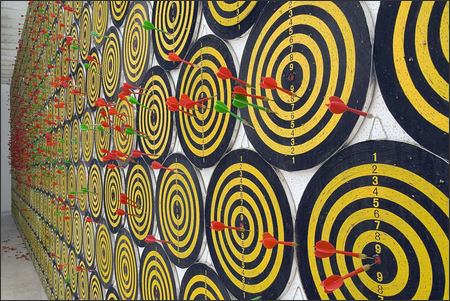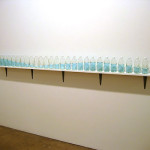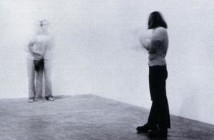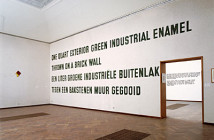MARKETWATCH
Developing surprising ways to extract value from existing products is nothing new. In many ways it defines modern innovation. If one looks at the internet, arguably the single most important invention in today's post-modern society, one can trace its usage from academics utilizing the web to share documents to current users who watch television shows, publish newspapers, write art criticism and, sigghhhhhhh, tweet. The phenomenal use of Twitter today is a seemingly short lived fad, and yet, with some careful consideration, might very well represent the most literate case study of how our economy is being shaped.
MIT professor Eric von Hippel coined the action of consumers actively modifying a product for their needs "end-user innovation." The platform of Twitter is astonishingly simple; one has the capacity to share what one is doing in 140 characters or less. Despite its seemingly trivial applications, Twitter has spawned countless applications, 11,000 of them and counting, none of which have been developed by the Twitter Headquarters. Of course, this dynamic innovation of a product for something else is not terribly different from, for instance, Google making itself synonymous with the web, but the astonishing speed in which companies, individuals, small businesses, corporations, political pundits, and yes, even Big RED & Shiny have attached themselves to this tool is something that begins to define a brand of innovation and economic reform.
To look at this concept another way: say I invent a new type of shoelace. For the fruits of my labor, I protect the shoelace with a patent, capitalize on the invention and thus create value. But if someone else comes along and uses my shoelaces to make, for example, a new type of dog toy, they have created value as well. Rare is the case when manufacturers are willing to bother with a single product for a single user. Scientists virtually always have to adapt microscopes and other instruments simply because the makers don't fully understand what the lab workers need. It could be argued that artists are often alternating existing things, simply because they haven't been altered or used in the way the artists see fit.
As Steven Johnson recently noted in a TIME cover story on Twitter, we tend to privilege the former value creator, if only because there is a small number of people who, like Twitter co-creators Evan Williams and Biz Stone, receive (or might receive, as Twitter has never generated revenue) giant paydays from their inventions. However, many people earn a living by utilizing shoelaces for unsuspecting uses, inventing new applications for Twitter, and artists exhibiting fresh methods to display wigs. It is precisely these artists I want to discuss, "end-user innovators", who modify to make new, re-define what invention might mean and in the process expand the value of art that parallels current trends in the larger economy.
The artist Jacob Dahlgren finds abstraction in everyday objects, such as his current installation at the Henry Art Gallery in Seattle, where dartboards are systematically tiled across the gallery creating a hypnotizing installation. As the press release succinctly states: "When arranged, the individual objects lose their intended function, their original value, and become part of something completely new." This "completely new" is end-user innovation. Dahlgren shares a strategy several other notable contemporary artists have explored that involves taking cheap, "everyday" objects and presenting an accumulation of them. Tom Friedman, for his earlier work, and Tara Donovan quickly come to mind.
Another artist who slyly adopts the excess of our consumption is Tony Feher. However, Feher's work never depends on a large accumulation of materials, his adaptations are closer to personal collections which he poetically arranges for the viewer. "Black Marquis" (2000) consists of 25 glass bottles arranged by placing each bottle directly against one another and offsetting the rows to form a trapezoid. Painted plastic and metal rings wrap the neck of the bottles while stunning black marbles sit in the bottle's opening. The marbles remove the function of the bottle, yet simultaneously convert it to a modest pedestal. Feher utilizes the bottles’ capacity to hold liquid in "Just So," a work in which varying levels of dyed water that move across a row of bottles on a shelf create waves. Feher's ability to find seemingly endless solutions with bottles, marbles, boxes and other debris he sees fit to display, appear labor-free, almost effortless. This is perhaps the greatest trait of any end-user innovation, to make the innovation appear as though it is a given, a natural progression.
Perhaps less obvious to end-user innovation would be the work of Rachel Harrison. Harrison's work is generally composed of readymade materials: photographs, toys, bicycles, trophies and almost anything else you can't seem to think of belonging to art. Generally, these unaltered objects are accompanied or displayed in accordance with carved foam, spray polystyrene and/or painted with something goopy. With impossibly difficult associations and logic, Harrison's ad-hoc sculpture collages suggest that through innovation from existing materials, one can find subjectivity. In "Glamour Wig," a synthetic wig sits atop a carved form that acts as a crude stand-in for a mannequin. This "mannequin," painted roughly the same gray color as the wig, rests atop an aluminum ladder on the fold out shelf that was once intended for paint cans. Harrison's sculptural assemblages never guide clear paths of meaning, but find surprising, absurd and wonderfully bizarre uses for existing objects. Harrison's work advocates that no matter how much production and innovation are in the world, individual users can always alter and modify what subsists, exposing and celebrating personal idiosyncrasies.
- Jacob Dahlgren, I, the world, things, life, installation of a wall of dartboards, 2004.
- Tony Feher, Just So, 28 clear glass bottles with white plastic screw caps, distilled water, food coloring, 2002.
- Rachel Harrison, Glamour Wig, Wood, polystyerene, acrylic, ladder, synthetic wig, 2005
"Jacob Dahlgren -- Forward, Back, Right, Left" will be on view through June 28th at the Henry Art Gallery at the University of Washington, Seattle, WA.
All images are courtesy of the artists, the Henry Art Gallery and the result of google image search.







